
Contents
-
3Introduction
-
4History and Politics
-
5The hierarchy
-
6A Brief History of Violence
-
7Races Of Aesoa
-
8Dwarves
-
9Elves
-
10Humans & half-elves
-
11Gnomes
-
12Halflings
-
13Uncommon Races
-
14Gods and Worship
-
15The Dawnbringer
-
16The Drowned Mistress
-
17The Harvest Mother
-
18The Laughing Trickster
-
19The Lord of Abandon
-
20The Moonsinger
-
21The Nameless One
-
22The Nightweaver
-
23The Painbearer
-
24The Scorned Lover
-
25Other Gods
-
26Factions, Guilds, and People
-
27The Adamantine Conservatorium
-
28Greywalkers
-
29Vieifleurs
-
30You Will know our names
-
31Terror on the Coast
-
32Legacies Writ in Blood
-
33Locations
-
34AZAÏS
-
35Lindelle
-
36Effrette
-
37CICHEMÈRE
Part I
Introduction
The Land of Summer Calls...
Sunlight gently pours over the Ashcloak mountains to the east, rolling down the hillsides and crags and turning the cool browns of the night to a scattered display of scarlet. Like a warm blanket, it pulls back over crystalline lakes where fishermen are in their boats, hoping to bring home an early catch for their families in the nearby villages.
The light pours forth over rolling verdant hills, running far into the horizon. Fields of corn and wheat glow like embers in the first light as farmers gather for the work of their day, their sons close behind them as a rooster crows in the distance. The light breaks into windows where peasants say their morning prayers, and head into the streets to shop, the smells of fresh baked bread in the air.
On, and on, the light stretches up into bustling cities where puppeteers play on street corners for children, next to merchants wheeling carts full of goods. A drunk stumbles out of an alleyway, face still red from wine and the previous night's brawl.
Then the light breaks forward to castle walls, pouring through silk curtains of the finest make, which a noble lady pushes open, already finishing her first glass of wine for the day.
She peers at all the light has revealed, that which it has covered in it's warm embrace belongs to her. The fishermen, the farmers, the drunks and all - part of her domain. As she sips the wine and watches the people bustling in the streets, the chevaliers battling with swords flurrying in the fields below, and at the light pouring out past that which is hers, she embraces it. A new day in Aesoa.
A new day for wine, and merry company.
A new day for swordplay, and magic.
A new day for a new history to be written in blood.

PART II
History and politics

Aesoa has no formal kings or queens. There is constant warring and backstabbery in order to gain more power, but these conflicts are often very light, shrouded in subterfuge, and end in quick surrender. This has given the battles of Aesoa the nickname "Summer Wars" by outsiders - as a true bloodied conflict is rare.
Each Church has its own Diocese, and their own titles and regulations. Often they will work hand-in-hand with the Hierarchy, and in other instances will be more powerful than the lords of the region.
The Hierarchy of Aesoa is as follows (from highest ranking to lowest):
- Duke, Duchess. The highest title that one can hold in Aesoa. They govern their Château and ultimately the entire region, known as a Duchy.
- Marquis, Marqués The Marquis is an administrative position, much like the Viscount. They oversee the Duke or Duchess' affairs and exert their will to lower lords.
- Count, Countess The Count or Countess is the highest position that a peasant likely has a chance to meet. They preside over Counties, setting personal rules for their small regions, often encompassing two or more baronies.
- Viscount The Viscount is a particular position in that they do not own large tracts of land, instead usually residing in properties granted by their Count or Countess. The holders of this title are administrators of sort, aiding the Count or Countess by collecting taxes, listening to petitions from the smallfolk, and creating and maintaining the infrastructure.
- Barón, Baroness. Barons hold lands stretching for miles, including large cities. Lower lords swear them fealty.
- Lord (Sir, Signore)/ Dame A lord/dame is the owner of a single piece of property, such as a fort or a castle. This position is passed through bloodlines, and it is most commonly granted by positions of the higher hierarchy as a reward for loyalty. Besides knights, these "lower" nobles are the biggest casualties of the Summer Wars, as the victor will replace noble families with those loyal to his/her cause.
- Knight/Chevalier. The lowest form of nobility, a Chevalier (Knight) is a title granted most usually to a fighter of particular skill that has accomplished a great deed. As any knight can make a knight, this title is also often used as a reward for lesser nobles' progeny with no other prospects. On the whole, knights are sworn to a code of conduct and held to a higher regard, though some let what little political power this position grants go to their head, and abuse it.
A Brief History of Violence
Founded early in the second age, Aesoa was a haven for Elves fleeing their ancient homeland when a terrible sickness overtook it. Here they settled, and over centuries intermingled with the other races and adopted and created new customs. Aesoa is a land where beauty, wealth, and one's noble birth are traits valued above nearly everything else. The latest fashions, the finest armors: lords have them, and peasants desire them.
As a whole, Aesoa is largely mistrusting of outsiders. They are quick to made alliances and friends, though true trust and respect is hard to earn. They are a shrewd and calculating people, and it is not uncommon for everything to look amiable on the surface whilst terrible plots and schemes develop underneath.
Such is Aesoan politics.
The land itself is fertile and well stocked, with huge tracks of farmland and bountiful natural resources. Even those of the most modest beginnings can live a comfortable life, provided they work hard and make no trouble with the local lords.
The Blightwars
Twenty years ago, the forests and rivers of Aesoa were mysteriously plagued. It killed wildlife and crops, and turn soil largely unusable. When the Blightplague was contacted by humans, it rarely caused death, but sickness and fatigue. The threat to life quickly draining away was eminent, until it was discovered that the source of the plague were actually dark fey (faerie) creatures corrupting the land. The people of Aesoa quickly rallied against them, and were victorious. Through interventions both agricultural and magical, the land was largely healed, though the effects are still being felt to this day.
Most at the time feared that this Blight was the same sickness which destroyed the ancient elven homeland of Yfea, and the evil that caused it is merely dormant for the time being.
Unbroken
In the last few years, there have been attempts from the southernmost free cities of Sedras to take the north of Aesoa for themselves. They were unsuccessful, and their armies were driven back. The northern lords of Aesoa have not forgiven them, so skirmishes for the northern territory are common to this day.
It is rumored that the Duchess of Lindelle plans to organize her army for a full-scale assault, and claim these cities for her own, further expanding the strength and wealth of her domain.
Infiltration
In the last few years, refugees and exiles have been flocking to Aesoa. As the country is normally very hard to reach, there is suspicion that this is a tactic by other nations, sending their undesired masses to Aesoa to corrupt its image. In coastal towns and slums outside major cities, extra groups of the poor and foreign can be found, often ill and unable to work. These "Illicits", as they've become known, are a sore spot for lords, who look for any excuse to extradite, jail, or kill them.
Tides of Chaos
Aesoa has long been a land deeply rooted in magic. It is known that it shares a border with the world of Faeries. As such, there have often been strange beings, monsters, and wondrous natural magics that occur within its borders. People say, however, that things are getting stranger. Trees seem to change position overnight, animals act in ways completely opposite of their nature, and unexplainable occurrences seem to be on the rise.
PART III
Races of Aesoa
Choosing a Race
In Goldrun, especially Aesoa, all races are not considered equal, and come from varying places on the socio-economic spectrum. When choosing a race, think carefully about the implications of the race. Does your character come from the highest points in society, or aspire to one day reach it? Is your character from Aesoa, or an outlander from another country or across the sea? Does your character face trials and tribulations based on their appearance, or do they blend in with the crowd?
The following races may be chosen freely: Dragonborn, Dwarf, Elf, Gnome, Half-Elf, Halfling, Half-Orc, Human, Tiefling, Goliath, Genasi, Aasimar, Firbolg
Speak with your DM if you are interested in playing a race not listed here. Most other races do not have a presence in Aesoa, though exceptions can be made for particularly well thought-out concepts.
DM's Note Monstrous races are most usually not allowed.
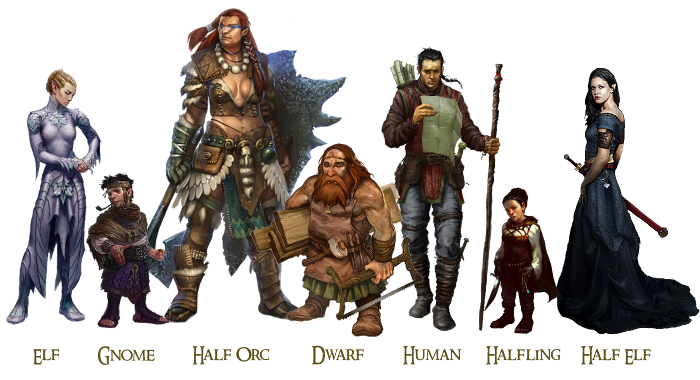
DWARVES
Our cousins in the Iolan Mountains have ancient amnesty with the Elves in their land. They constantly war over rights and territory, feeding more hatred into a centuries old blood feud. Here in our land of summer, we don't have such problems. You daughter, you are friends with elves, live among them, and can rise to the same seats o' power. They'll always say your work is half as good as an elves, so what do we do? We just make sure our work is twice as good.
The Dwarvern Clans
The Dwarves believe there are six "true" Dwarvern clans, though millennia of interbreeding and exploration have made these bloodlines much less clearly defined. The old belief persists that each of the six dwarf gods crafted a dwarf clan in his image, and in some places you'll find Dwarves who remained prejudiced against other clans on this belief. The gods and their clans are: Otun: Brightborn Dwarves, Hadrian: Mountainsong Dwarves, Tyysus: Ironwrought Dwarves, Lyseius:Firebeard Dwarves, Astus: Ashcloak Dwarves, Uduum: Duergar.
MOUNTAIN DWARVES
Mountain Dwarves (Moutainsong, Ashcloak, Ironwrought) are seen in Aesoa primarily as mercenaries or refugees from the neighboring province of Kel-Tharn. These dwarves have a bit more difficulty fitting in. If they don't bring trouble with them (which is common) the perception that they might makes almost any citizen hesitant to take a chance on them. As a people, they are proud, strong willed in the face of adversity, and make the best of the situation presented to them. Mountain dwarves often look down upon their Hill cousins, who flaunt about their status.
HILL DWARVES
The Hill Dwarves (Brightborn, Firebeard) of Aesoa used to have smaller villages and hamlets scattered all across the verdant hills, and there are historical clues that they were on the verge of the creation of a true nation before the elves came, and came in full. As the castles rose and the armies rose with them, these dwarves quickly took their place among the new powers and have been a part of metropolitan life ever since. Hill Dwarves are often found as farmers and commoners. Those that are craftsmen aspire to reach the highest point of Aesoan life, and become merchants, jewelcrafters and weavers, instead of blacksmiths like their Mountain cousins.
DUERGAR
To an Aesoan, Duregar mean trouble. Always. Thankfully attacks from these tribes in Kel-Tharn are far and few between. When a Duregar does make its way from the depths underground, they are met with well-earned distrust and hostility.

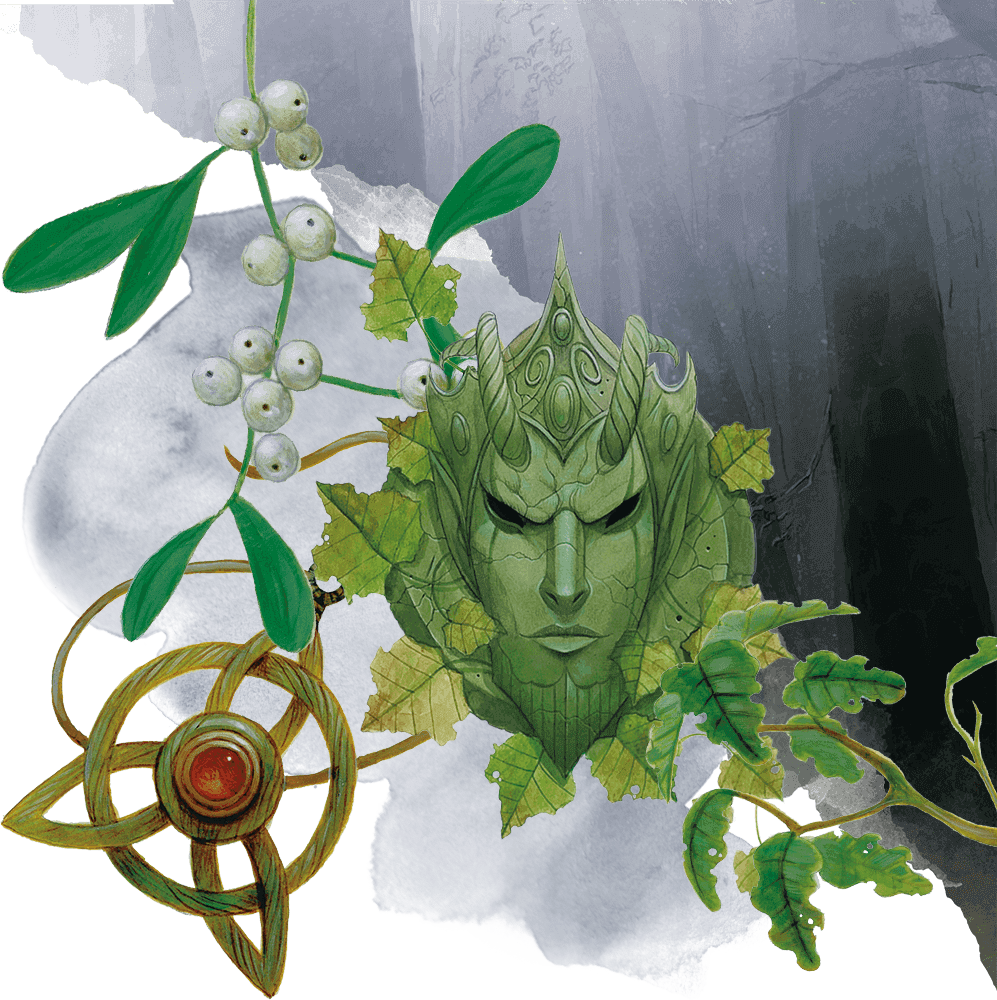
ELVES
It is no surprise that in a country which places beauty and bloodlines above all else, Elves are the most numerous and respected of all races within Aesoa. Legend holds that when a sickness took the forests of Yfea, the elves migrated to a new homeland, and found it fertile and untouched. Years with no threats, no outsiders. From there, the elves went forward, each of them eager to establish themselves as a new lord or lady in this unclaimed land. The lush resources and ample space made it easy for the elves who were uneager to swear fealty to one another to raise holdfasts in their own names, and soon each region had a governing elf lord, each with his and her rules and regulations. To this day, you'd be hard pressed to find a full blooded elf of any subrace doing an honest days work. Any member, from the youngest cousin to oldest uncle knows their relation to the nobility, and how to get respect for their family name.
HIGH ELVES
Also known as "The Summer Elves" are the most represented among those with power in Aesoa. Even more so than even other elves, these light haired, golden skinned elves have a history of nobility that stretches back before most of the world was built. They often look down on other races, even other high elves. They retain their innate magical abilities, even those who live the life of an aristocrat are given an elementary lesson in magic, while others see the true position of power to lie with those who have mastered it the most. They do not keep the gods of their homeland, instead abandoning their old faith and worshipping the pagan gods of Goldrun like The King of Abandon or The Scorned Lover.
WOOD ELVES
Slightly less respected than their golden cousins, wood elves are more down to earth, and more outspread among the countryside. Some elves have taken to forcefully protecting the remaining woods that once covered a much greater area, and have taken it as their own royal domain. Wood elves are more likely to take a human consort, or to become knights or adventurers as well.
DROW
In the land of summer, a creature that cannot bear the sunlight is one that should not be seen. Much like Duregar, Drow are ostracized and feared, any in this region often flee to neighboring Kel-Tharn, or in their communities deep under the ground.
There are rumors of Drow communities that worship The Dreamweaver deep in the woods above the ground, and other races make alliances with these Drow in the name of their goddess.

HUMANS
Thousands of years ago, with their strongest political group leaving to find better prospects, the humans of Esteria decided it was better to face the unknown rather than the continuous warring of the Defiant Lords. They sailed north, some with but the majority after the elves had landed on Goldrun, and have been second to the elves since the inception of the country.
Widespread and numerous, humans fill every role possible from lowest beggar to highest lord. A human will face little discrimination on their race, the focus instead being on their social class, meaning those with noble names cling to them more fiercely than even elves.
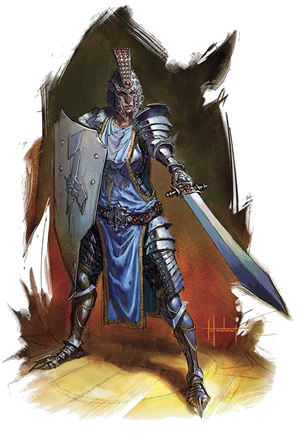
Heritage and Expectations
Human partents of Half-Elf children will often have their child "play up" their elven side, by featuring the points in their ears or their golden skin. By doing so, they hope their child will be perceived as higher-up, as appearances have power in Aesoa. On the other hand, sometimes Elven parents do not wish the human parents associated with their child, and will raise it on their own.
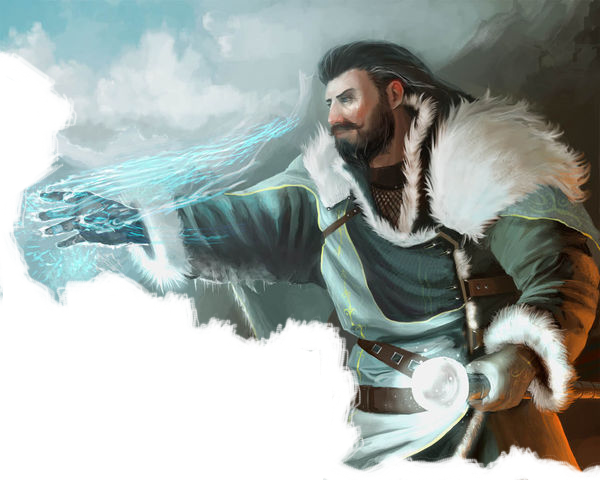

HALF-ELVES
Often the bastard children of elves in a position of power, Half elves are more common in Aesoa than the other parts of the world. They receive sharp indignation from the most bloodline obsessed elves, who see them as a corruption of their purity, but receive little to no discrimination elsewhere.
More often than not, a half-elf will find life easier than their human parent.
Gnomes
Though they share short stature with halflings, Gnomes share little else. Few would mistake one for the other, as the Gnomes of Aesoa are held in high regard due to their shared magical ancestry. Gnomes were not common in Aesoa for an extended period, establishing later than Dwarves and Humans, though they rose through the ranks much quicker than the former. Gnomes in Aesoa are proud and bold, wearing hair of multi colors and innovating on the latest fashions with strange assorted amendments.
ROCK GNOMES
Rock Gnomes are most likely to be found in the northern mountains, and make up a secondary majority population of Soibéliard. The natural inventiveness of these folk led them to create new innovations in grape cultivation, infrastructure improvements, and other technological advances which made the gnome clans very wealthy.
FOREST GNOMES
Those forest gnomes who felt a strong calling to their fey ancestry flocked to the Languei Woods and made quick friends with the elves there. Those who were guided by their sense of adventure spread out and made burrows among the hills. Others used their knack for illusion and practical jokery to perform in town squares, creating performing troupes that travel and bring joy to peasants and courts alike.


Halflings
The smallfolk known as Halflings have populated the hills of Aesoa for centuries. Migrants from the Shimmering hills in the northern continent of Aeranor, these folk wasted no time establishing their new home and created farmlands and community shires that would last until the present day. As a people, halflings are largely considered "cute" or "quaint", and most halflings don't mind as they carry on in their rustic lifestyles. Those that do aspire for greatness don't usually make it too far, usually ending up at court as minstrels, entertainers, advisors, or low level diplomats.
LIGHTFOOT HALFLINGS
The light foot clan was born of those halflings who honored cunning and self-preservation over the traditional halfling values of home and hearth. Though exceptions can be found in both instances, Lightfoot halflings are more likely to take off on adventure, take a trade and travel, or participate in the espionage of the politics of Goldrun. Many become minstrels and stroytellers, using their unassuming size and position to move and spy in secrecy.
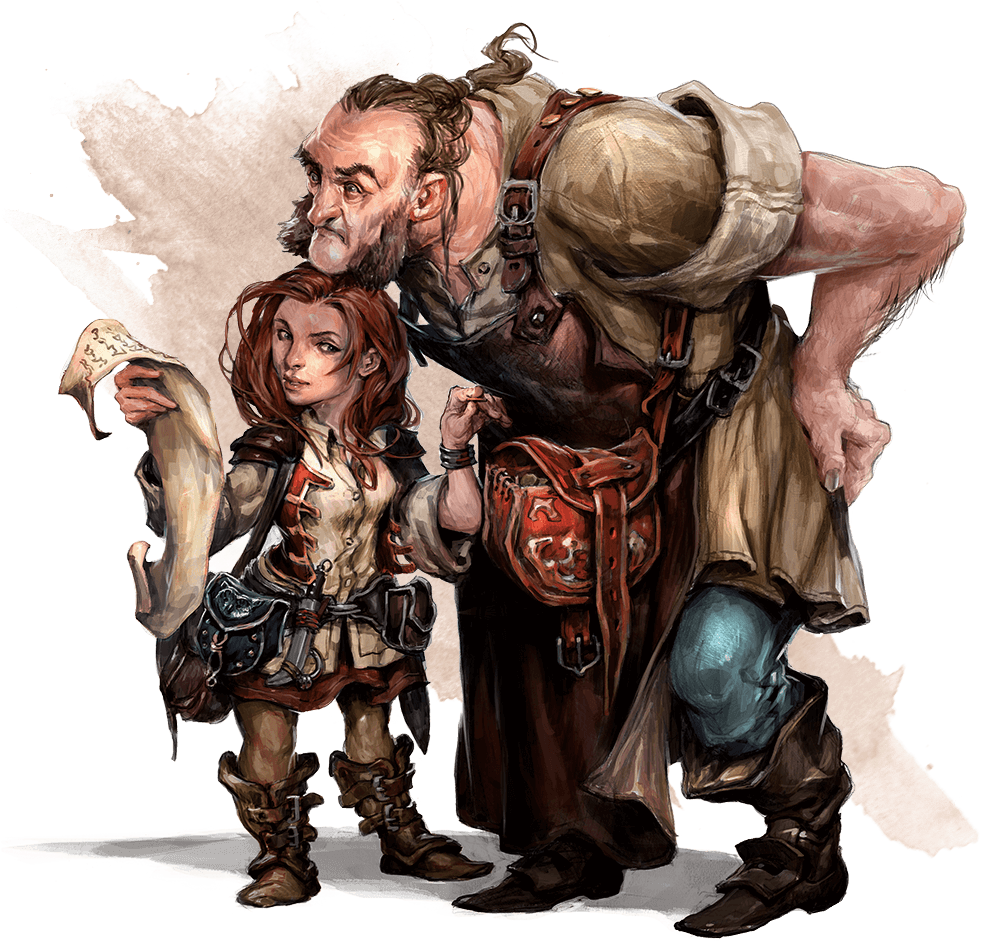
STOUT HALFLINGS
The sturdier type of halfling are no strangers to the harder side of things in Aesoa. After the initial migration of halfling to the country, these folk spent generations under the sun, making them burly and strong. They tend the fields, work the mines, and fish along the coasts. The stout halflings tend to be simpler folk, concerning themselves with the welfares of their farms and families than the ongoing of the politics around them. Don't be fooled, however, when called to action, these simple folk show just how tough you can be under four feet tall.

UNCOMMON RACES
These following races represent a much smaller population of Aesoa, some being a rare sight. There are few communities, if any, dedicated to these races, though no matter how small, representation can be found somewhere.
HALF-ORCS
Garish and ugly, Half-Orcs face the worst discrimination in all of Aesoa. Their parents are often refugees from Kel-Tharn, where the warring orc tribes will often take human consorts and slaves. Half-Orcs in Aesoa have little option to rise above peasantry, most become sellswords without the change of ever becoming chevaliers. Some cannot stand the persecution, and instead travel back to their clans in hopes of proving themselves in the wilderness. True "half" orcs are more rare, as those who have found mates and established homes in Aesoa try and play up their human features, slowly losing their "savage" traits over generations. These orcs might make the bodyguard of a noble, who no doubt prizes the orc blood for their strength but can't have them be seen as "too savage" by the rest of the nobility.
DRAGONBORN
Dragonborn would face the same discrimination as half-orcs (and they do, in large) save for the fact that people are often infatuated with how strange and foreign they seem. Like Half-Orcs, they originated from Kel-Tharn and are often seen best used as bodyguards and sellswords. But the more sophisticated of Dragonborn have risen above this prejudice and rose to higher circles, mostly settling with wizards and other arcane users. Dragonborn might find opportunity or denial based on the color of their scales. A noble might make a chevalier out of a silver or gold dragonborn simply because it matches her aesthetic more than a green or blue one.
TIEFLING
Tieflings are met with the same novelty that Dragonborn are, with less of the brutish prejudice. They are not totally unheard of, but there are no strictly Tiefling communities or societies in Aesoa, save for a large congregation that worships the Painbearer. Most are treated as humans are, though some are a subject of distaste (or delight) depending on the look of how their internal blood chooses to manifest itself.
GENASI
Genasi are a rare and blessed sight in Aesoa. Because of the countries deep rooted magical ancestry, extraplanar beings are drawn to it. Servants of the Drowned Maiden, or other nature gods, will often perform rituals and try to bind genies to this plane, hoping to create a child of the union. Other rituals, or elemental confluxes may occur, causing a elementally infused child of two mortal parents. Peasants awe at the sight of genasi, nobles look on with great curiosity, and fanatics obsess considering it a blessing from their god.
GOLIATH
The mountain tribes to the east of Aesoa represent some of the last "untamed" peoples of the region. Surprisingly, Goliaths are often appreciated for their sleek hairless characteristics and some view their tribal practices as "fascinating" rather than barbaric. This might change when an Aesoan sees one up close, however. Though most Aesoans would have heard of Goliaths, and there are several who have taken up to living amongst the populous, it would be rare and a point of fascination to see one for yourself.
FIRBOLG
Like Dwarves, Firbolgs have existed in Aesoa longer than the other races. They are seldom seen, most choosing to stay confined with their clans in Heart's Grove, or gently tending to the countryside. They are given a degree of reverence and respect, if not thought to be a bit primitive in their way of life. They make contact with the outside world through envoys and as the nomadic tribes travel, though few outsiders have ever seen a Firbolg's true home
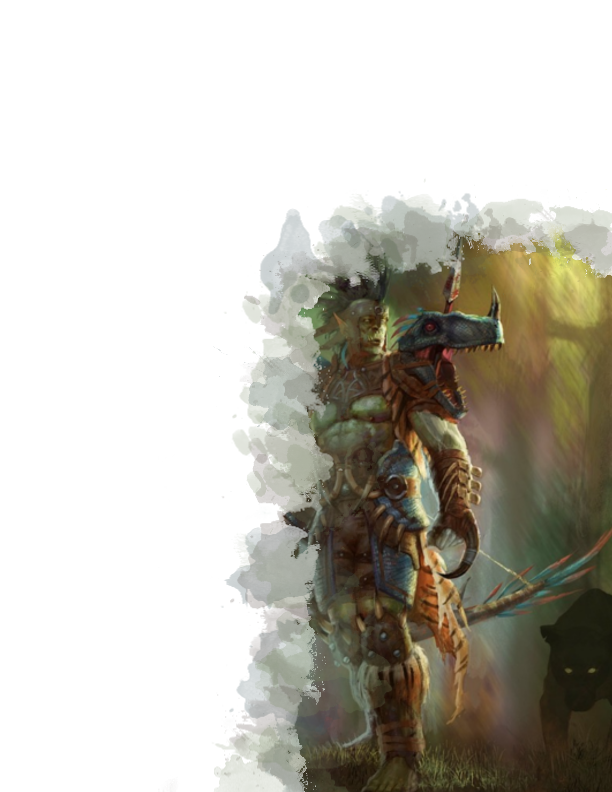
PART IV
Gods and Worship
Gods, Old and New
Few of the traditions of the world are followed in Aesoa, instead, they fervently worship several gods (Known as the "Summer Gods" for their relation to light and nature) which some would call pagan, though many have powerful established sects in the region. The worship of powerful Archfey is also not uncommon.
Because names and true names have power, nearly all gods are spoken of by their titles, so as not to disrespect them.
Gods of Fickle Fortune
The Worship of ALL of the Summer Gods is allowed in Aesoa, including evil gods. Even the evil gods may be followed by non-evil characters that seek certain aspects from them. Also note you are not tied to the exact alignment of your diety. Clerics may also choose domains that are not listed, for example a Knowledge domain cleric would feel right at home under the Dawnbringer's light, and a worshipper of The Nameless One could easily follow the way of Arcana.
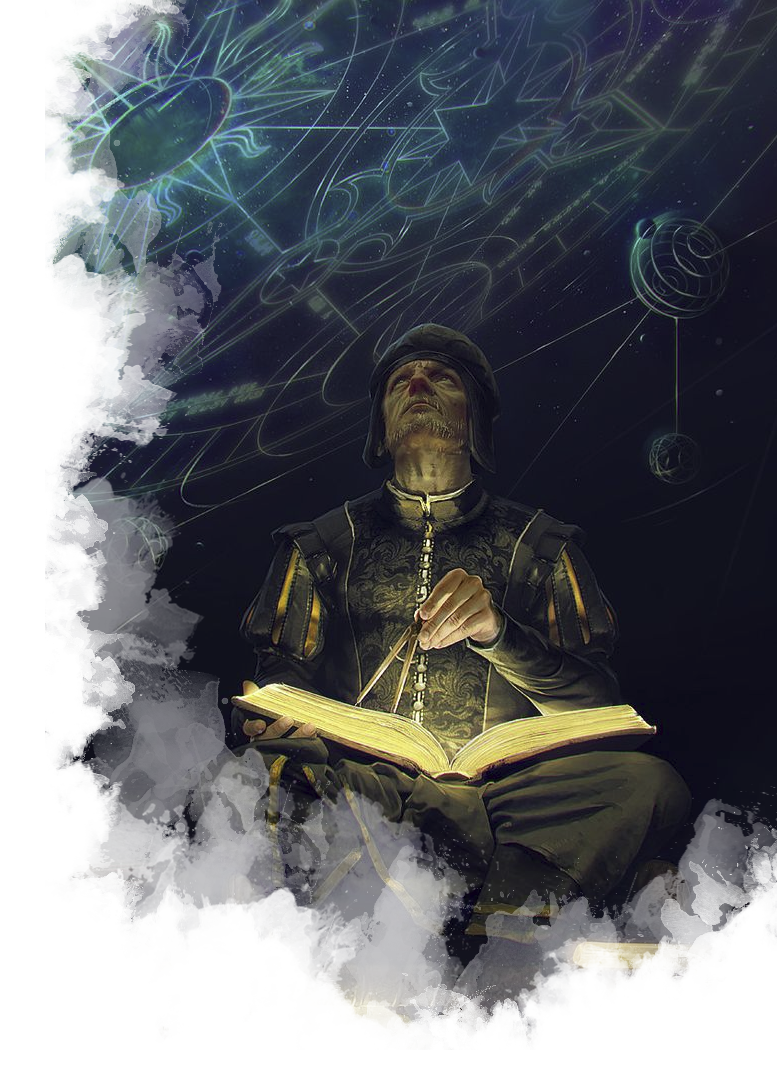
The Aesoan Pantheon
| Deity | Alignment | Suggested Domains | Symbol |
|---|---|---|---|
| The Dawnbringer, god of the Sun | NG | Light, War, Forge | golden hands cradling a sun |
| The Drowned Mistress, goddess of storms | CN | Tempest, Grave, Nature | a face with leaves covering eyes and water pouring from its mouth. |
| The Harvest Mother, goddess of seasons | CG | Nature, Life | scales in the shape of baskets |
| The Laughing Trickster, god of mischief | CN | Nature, Trickery | three interlocking keys |
| The Lord of Abandon, god of greed | CE | Trickery, War | grape vine, mounted by a pair of horns |
| The Moonsinger, goddess of mysteries | LN | Arcana, Knowledge | moon wrapped in spirals |
| The Nameless One, god of the ages | N | Knowledge, Death | a circle, surrounding a triangle |
| The Nightweaver, goddess of fate | LE | Arcana, Grave | A spider with a loom on its back |
| The Painbearer, goddess of sacrifice | LG | Life, Grave | a skull, weeping blood |
| The Scorned Lover, god of beauty and pain | CE | Nature, Blood | a bleeding rose |
THE DAWNBRINGER
When the sun rises over the hills past the Nourri plains, and a lord looks over at their land as the golden sunlight pulls across it - they give thanks for the Dawnbringer for once again staving off the darkness. When a blacksmith is hammering away, and gets a new design just so…he gives thanks to the Inspiring One for granting him that light. The Dawnbringer is the god of the Sun, fire, inspiration and creativity, and is venerated widely by smiths, farmers, nobles, and people of all kinds across Aesoa.
OTHERWISE KNOWN AS
- Daybreaker
- Sunsinger
- The Golden Lord
- Champion of Light
- Inspiring One
EDICTS
Bring light to where shadows lie. Create, inspire, and enjoy life. Bring wrath down upon those who would usurp the light.
MYTH
After the Dawn of the Celestials, where dragons and titans fought against gods, the world was left desolate and barren. The Celestials returned to their places on high, and took with them the light of creation. The Dawnbringer took a spark of this, and that became the sun, which we wove over Goldrun and gave it its verdant grasses and long summers. With this light, he inspired warriors and craftsmen to take up in his name, and begin worship. When the Exiled Gods sought to take the light for their own, The Dawnbringer held it loft for mortals, while he fought them singlehandedly with his other hand.
WORSHIP
It is most common for peasants to rise with the sun, and give thanks in prayer to the Dawnbringer for bringing them a new day. Craftsmen will wear golden sun talismens around their neck hoping that the Dawnbringer grant them a steady hand in their craft. Temples and altars to the Dawnbringer are common, where candles are lit and donations are used for community repairs and arming the militia. May a chevalier will emblazon their armor with the Dawnbringer and go out seeking to do good deeds in his name.

The drowned Mistress
The Drowned Mistress is the goddess of storms, rivers, chaos, and the cycle of rebirth. She is feared as much as she is worshiped, and few who live near the water dare not pay her tribute. Gifts of fruit, flowers, and young animals from the shore are sacrificed to gain passage. As the goddess of chaos, those who wish for change will often pray to the Drowned Mistress for some disaster to strike down their enemies. The Drowned Mistress is a gentle soul, but wakes violently when offended, and never fails to get revenge for misdeeds against her ever since her initial betrayal.
She is depicted as a beautiful woman with seaweed for hair, clothed in leaves and body ravaged by a natural storm.
Otherwise Known AS
- Earthscorned
- The Drowned Daughter
- The Reborn Storm
EDICTS
Suffer no injustice to yourself. Answer indignity with righteous fury. Change, or die. Bend with the storm, or break. Respect that which has more power.
MYTH
A noble woman awaited the return of her love, a fisher lord, anxiously. When he returned from his long voyage, he brought with him another woman. The laws of the land forbade him from taking another wife, so the new woman drowned the fisher lord's wife, holding her under the water until the life left her. In her final moments, the fisher lord's wife poured her pain, her anger, and her strife for vengeance into the water, and bound to it. From there her spirit turned with a powerful vengeance and moved the forces of nature against the new woman. She then turned her wrath to the sea, preventing her husband from ever leaving the land again, making him destitute and so he withered away, alone.
Worship
When departing to the sea, or across a dangerous river, it is typical to build a pyre, often with a live sacrifice or something harvested from the mainland. In the mainland, small shrines with incense are burned where flowers, coins, and gifts are left as peasants pray for storms to pass over. She is praised also by the blood of a foe on your blade: People who are wronged will pray and offer their lives for the chance of vengeance.

THE HARVEST MOTHER
The Harvest Mother is the patron of farmers, expectant mothers, balance, and the change of seasons. As the goddess of life, she despises poisons, rot, snakes and spiders. Followers of The Harvest Mother often fight with followers of the Dreamweaver. The Harvest Mother is the goddess of agriculture, though many who worship the natural growth of the world also venerate her. As the goddess of change, she is also prayed to in order to see a good transition into the new seasons, and when a significant change is made in one's life. The Harvest Mother herself is said to change with each season, bringing different blessings and requiring different offerings for her new personalities.
She is depicted as a woman or elf surrounded in nature and often conforming with it. Other times, she is represented only as a great tree.
OTHERWISE KNOWN AS:
- Allmother
- Lifegiver
- Lady of Golden Scales

EDICTS
Do not resist change, embrace it, and make it your own. Work hard and cultivate, do not let your charges wither under your watch.
MYTH
The Harvest Mother is the only other Ancient God of the Summer Pantheon aside from the Nameless One. She existed on this plane before the Dawn of The Celestials, and when the new gods carved out their place in the world, they respected The Harvest mother - for she controlled the very earth on which they would house their disciples. It is said for most of the year, the harvest mother is kind, caring, and gentle towards her children, though her mood varies. In springtime, it is said she is like a young maiden, full of spirit, bright beauty and cheerfulness and her favor is easily won. In summer she is brazen and bold, forcefully protective. In autumn her mood slows, and she is like a pregnant mother, carefully looking over her children and reproaching wrongdoers. In winter she is said to be the most beautiful of all, but as the light and heat fade from her bosom, she feels the loss and becomes cruel and unlikely to aid her children.
The LAUGHING TRICKSTER
The Laughing Trickster is the fox god of thieves, small favors, and luck. He is a notorious prankster and trickster, and has a soft spot for animals, especially foxes. Most worshippers of The Laughing Trickster are thieves, though often common people will say a soft prayer for him for luck. As the god of small favors, he may also be called upon for tasks that might not be large enough for a bigger diety - a broken cart wheel, that you find a lost family ring, no favor is too smal for The Laughing Trickster.
He is often depicted as a hooded, bipedal fox wearing a mask.
EDICTS
Wear a mask of many faces - do not let your true self be betrayed. Spread well won wealth to the less fortunate. Walk softly and move quietly. Disrupt the monuments created by man, but keep the forests.
MYTH
The Trickster began as a fox from the land of Faeries. He was clever, and won the favor of many powerful lords and ladies. After he had befriended them, he robbed them blind, and their collected wealth made him something of a lord himself. The realm of Faeries held little mystery for the Trickster, who above all sought to prove his cleverness. He traveled to the far reaches of the universe, and stole a mystical key, said to unlock unsolvable mysteries from an Ancient One. With that he learned the secrets of godhood and resolved himself to help the downtrodden, but clever mortals on the material plane.
WORSHIP
Shrines dedicated to The Laughing Trickster might be found in the lowest places. There, under his symbol, the poor hope a kindly thief will take note - and drop off something to help them through these hard times. His shrines can also be found in the wilderness, you might find a hidden cache of supplies or a note for a secret path where you see the Tricksters sign nearby. In everyday life, the easiest way to venerate the Trickster is to annoy, prank, and steal from those that are deserving.
The Lord of Abandon
Worshipped as little more than an outsider god in other places (and outlawed in most civilized parts of the world) The Lord of Abandon is the god of self-perseverance, lust, power, and greed. He is one of the most popular of all gods in Aesoa, where parties, debauches, and revelries are often held in his name. He is venerated by lords and degenerates alike.
OTHERWISE KNOWN AS
- The Debauched King
- The Lascivious Lord
- The Rakish Faun
- King of Corruption
- The Defiler
EDICTS
Abandon all inhibitions and reservations. Do what is best for yourself, no matter the consequences others may face. Never deny yourself indulgence, for that is what life was made for. Do not restrict yourself to laws, including your own moral code.
MYTH
Most commonly believed is that the King of Abandon was a Satyr from the realm of Faeries. Upon discovering the mortal realm, he found it all too easy to tempt mortals into contracts, as they were less scrupulous than the fey he had dealt with in the past. His favor was given, freely, and with worship comes power - as long as mortals seek the pleasures of life, The Lord of Abandon will have a foothold in their world.
WORSHIP
Although he favors the self above all, The followers of the Lord of Abandon do not instantly kill all others in their path. Quite the opposite - a multitude of friends and servants are seen as a sign of power, just as long as they are still serving your cause.
To praise the Lord of Abandon, followers will often throw gigantic parties full of over indulgence of the finest food, wild sex between the participants, and perhaps a show of violence or two. In the day to day, he is venerated when a servant obtains their goal through the easiest method, or the one which serves them best. He does not require much in way of ritual, but an utterance of thanks or praise at that moment of salacious elevation. When a Dame receives news that her nearest ally died of poison in the night (effectively doubling her land) she might cover a smile, and quietly whisper "I sacrifice this moment to the King of Abandon." as way of showing respect.

The MOONSINGER
The Moonsinger is the goddess of the Moon, Stars, lost paths, singers and romantic love. She is venerated by minstrels, witches, travelers and star-crossed lovers. She is also the goddess of eminent magic, and is favored by sorcerers and wizards (especially the illusion and conjuration schools), high elves and gnomes.
She is depicted as a beautiful elven woman, with a gown made of starlight. She is often seen rearranging the cosmos to her liking.
EDICTS
Let love find a place in your heart. Seek yourself to be awed by beauty and wonders. Understand some mysteries are to remain unraveled.
MYTH
The Moonsinger was the wife of the Dawnbringer. When he took the monumental task of holding the light for mortals, she was left alone. In her sorrow, she began to sing, and reach out her hands to the sky where her husband dwelled. Too weary to come down to her, he instead sent what little light of creation he could spare, which the Moonsinger used to create the moon. This weakened him even more, but still she sang, and still he sent the light to her. Little by little, she hopes to one day fill the skies so full of starlight her husband will be free of his duty and they will be together again.
WORSHIP
In High Elf households, gifts of magical nature are burned in a silver brazier. Crystals, Arcane Dust, and silvered jewelry are acceptable offerings. She is called upon before rituals, so that they may be performed correctly in her name. When lost, especially at night, a traveler might pray for guidance, and look to the stars for answers.

The Nameless One
The Nameless One is the god of knowing, understanding, and the natural passage of time. As an Ancient god, it is also said that he presided over the passage of death. In Aesoa it's often joked that the Nameless one became so because he was given so little respect he fell out of memory. In a country where individuals are lauded for meddling in the affairs of others, it's no surprise a deity who doesn’t involve himself wouldn't be popular. That is until recently. Knowledge is power, doubly so when court politics cause constant warring. And so worship of the Nameless One resurfaced among scribes, historians, and spies - all hoping his infinite knowledge would grant him the upper edge.
He is depicted as a wizened old man with a cloak and long beard.
OTHERWISE KNOWN AS
- The Watcher in the Woods
- The Silent King
- He-Who-Hears-All-Whispers
- Chronicler of the Ages
- Stranger
EDICTS
Observe all things around you, come to understand your attunement to them, and them to you. Speak only when you have something worth saying. Seek lost and forgotten knowledge and preserve it for the ages. Fear not death, but come to know it. Above all: Think before acting.
MYTH
The Nameless One is one of the Ancients, unlike the other "Summer Gods" of Aesoa. He has existed since the time of the Dawn of the Celestials, though much pertaining to his worship and history have (ironically) been lost. It is said he is the Chronicler of the Ages, and has the histories of all gods and men recorded in his book.
WORSHIP
To worship the Nameless One, followers will seek out long ancient ruins or temples - trying to find lost lore there they may bring to light. In the day to day life, a man may rebind a book, or perform funeral rites for a friend.
The other side of the Nameless One is one of quiet reverence. When one is plagued by a sudden disaster, or death comes unexpectedly, some might pray to the nameless one for forgiveness. He is enigmatic as he is old, and there are countless routines and rituals to appease this god who gives no sign of his favor.

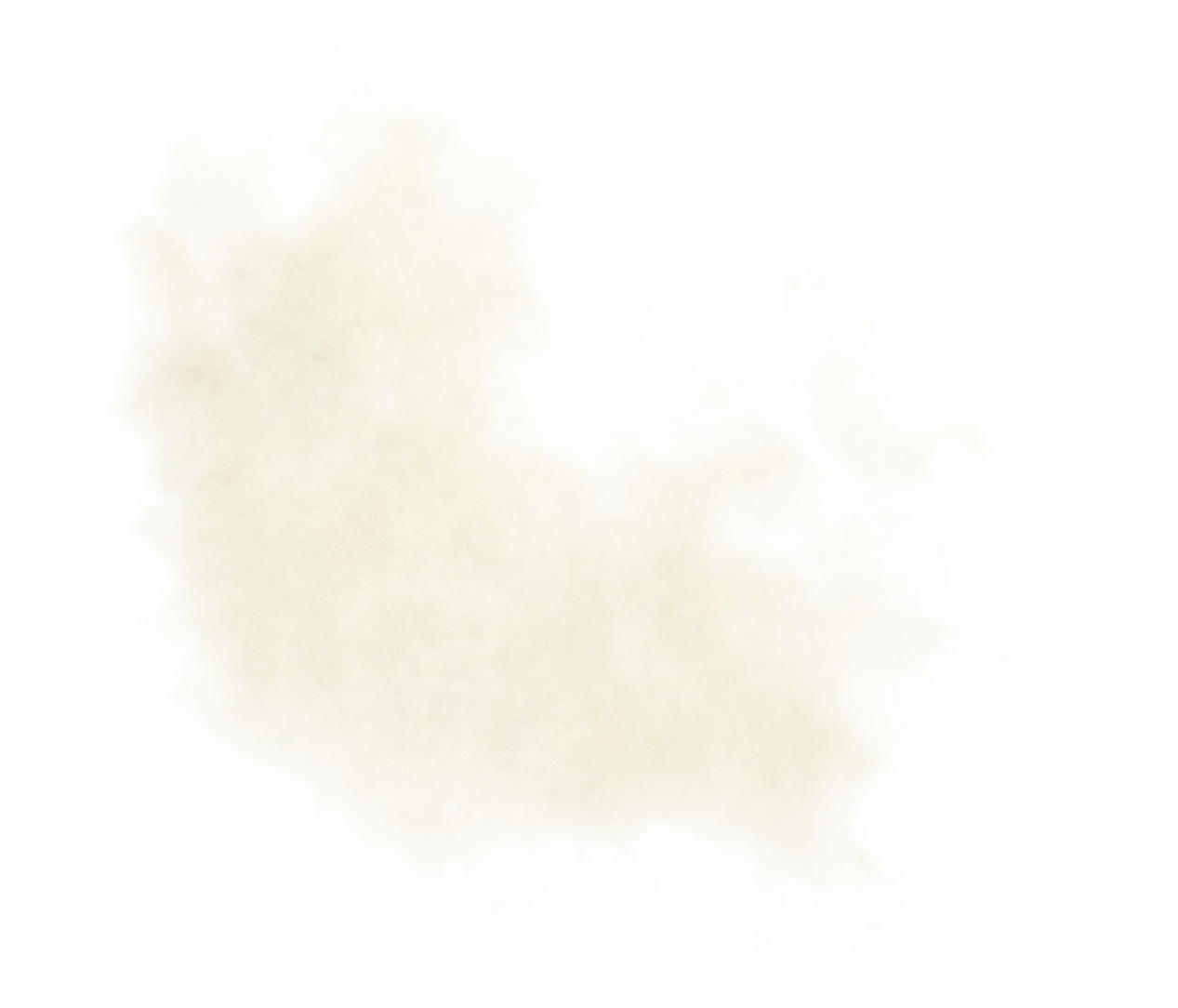





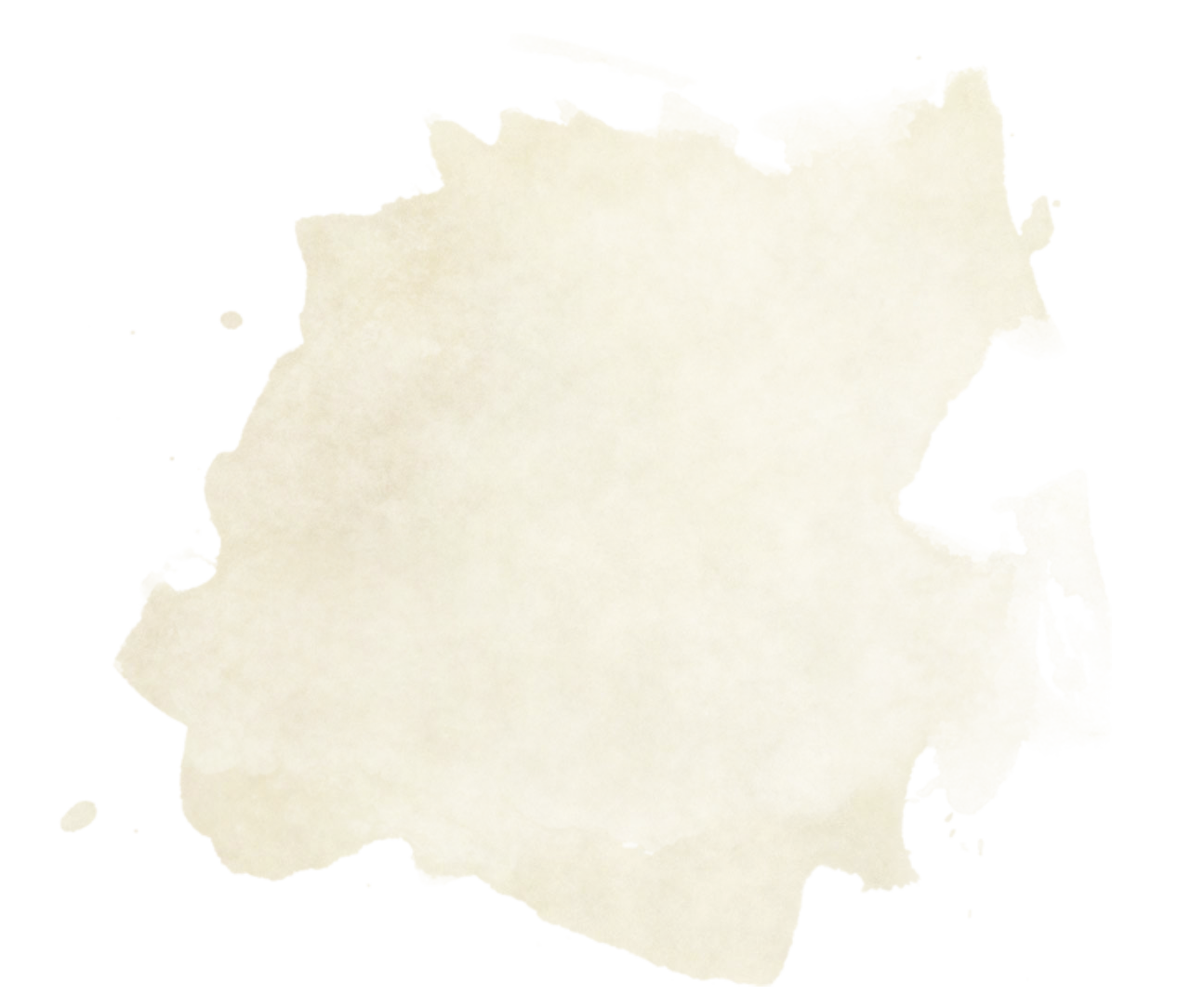



THE NIGHTWEAVER
Some say, that when you feel a chill down your spine and feel an unwarranted sense of dread, The Nightweaver has just spun you a new fate. She is the goddess of fate, spiders, poisons, and dreams. She is largely venerated by both wood elves and drow. She is also respected in magical circles, especially Diviners and Necromancers. Assassins will often give her thanks in the shadows, and those with woodland homes pray for her watchful eye.
She is depicted as a pale woman with silver-white hair, most often upon the body of an enormous spider.
OTHERWISE KNOWN AS
- Fatespinner
- Queen of Spiders
- Doomweaver
- Dreamcaller
- Shadowed Mistress
EDICTS
Seek solace in the dark places. Unravel the mystery of your own fate - learn to interpret signs and omens. Understand your place among the web of all lives. Tie together the threads of destiny: follow your dreams when called and lead others to their fate with the things you have learned.
MYTH
Legend holds that the Nightweaver was once a powerful Archfey, banished to the realm of shadow. There, on her loom, she began to weave the web of fate of the mortal realm. There, on it's woven thread is the every possible future of every living individual. Though broken in power, she sends signs to mortals through dreams and visions, and hopes to guide them to a greater future.
WORSHIP
Worship of Nightweaver is often done in quiet solace. A worshipper may partake of substances to try to induce visions, and commune with her. Others will begin to weave tapestries based on their dreams, making beautiful designs that they will then try to interpret.
When there is a gathering, followers will share the signs they have seen, and together try to understand what their goddess is trying to tell them. From there, truly zealous followers may abandon their life and integrate into other places, and try to make their dreams reality.

The Painbearer
Painbearer is a goddess deity of healing, redemption, and sacrifice. She is worshiped by those that seek to heal the world of it's suffering. Those that have suffered a terrible tragedy and know not where to turn often find themselves devoting their lives to the Painbearer, who teaches them to understand their suffering, and to aid others who are suffering the same. She is venerated by clerics, and is the patron of Tieflings.
She is depicted as a young girl with horns. Her body is said to be gray and cracked, and has thousands of faces growing out of it - faces frozen in agony. These faces are said to be of the sins she bore for others, taking the pain of their judgement so they might be redeemed.
OTHERWISE KNOWN AS
- Ill-Starred Child
- Infelicitous One
- Daughter of Sin
- The Grey Maiden
EDICTS
Never leave one to suffer alone, if action can be taken - take it. Help ease the passing from this life to the next, see that those souls pass gently. End the suffering of tortured souls that return as undead by cleansing them.
MYTH
The Painbearer was a young goddess of light and healing, and was bright and beautiful. She saw the gods punishing their creations, and in her youth, did not understand why. She begged the other gods not to punish their disciples for their sins, instead, she would take the punishment. With each sin she took, the mortals were granted a chance of redemption. Many of these chances were squandered, and soon mortals began petitioning the Painbearer more and more, and using her to escape the pain for their# misdeeds. Over centuries, she grew too horrid to live among the gods. She lives now in isolation, eternally suffering for the chance that others may not.
WORSHIP
Any time you sacrifice something of yourself for another, you honor The Painbearer. She is prayed to at shrines and temples built to her, grey halls that hold no elegance. Her priests ensure tithes are given to the proper place. Healers praise The Painbearer when a victim is near death, and they are able to bring them back from the brink.







The Scorned Lover
The Scorned Lover is the god of art, beauty, pain and blood. He is venerated largely across Aesoa, where beauty is held in the highest regard. No pain comes without suffering, though at the highest points of aristocracy this might mean the suffering of others. Believers of The Scorned Lover believe that true beauty (whether that be magic, a garden, music, or a painting) only comes from pain and otherwise a work of art holds no value without some sort of tragedy behind it. This leads to the more fanatical followers creating sects in the woods with living sacrifices, while the less fervent might grow plants fed with their own blood. He is loved by warlocks, and wild sorcerers.
He is depicted as a man, eternally enclosed in a rosebush, entwined and fused with thorns that constantly dig into his skin.
Otherwise known as
- Tortured Divine
- The Bleeding Rose
EDICTS
Seek true beauty, and understand it only comes from pain. Forgive those who have wronged you…only after you have made them suffer. If love does not blossom, cut it from your heart, lest it take root in your heart.
MYTH
The Scorned Lover was a lesser god, who yearned for the goddess of beauty's affection. He wrote her poetry, sang her songs, but she would not return his affections. He sent himself to the Garden of the Gods to take a rose of virtue, the most beautiful of all flowers. But the desires in his heart were not pure, so they twisted and turned, and he became tangled in the thorny brush, with the rose eternally out of reach. He besought his lover to free him, but she turned away, leaving him to his fate. Generations led The Scorned Lover to accept his fate, and his skew on beauty became twisted and skewed.


WORSHIP
Across Aesoa, Thorn is venerated daily. Starving artists will cling to hope in their darkest moments, thinking that their suffering is a sign that their greatness will soon emerge. Torturers and assassins might think they are giving a blessing to their victim, and often use thorns, and bindings in their work.
Other Gods
Worship takes many forms and faces. Though the Summer Gods are the most prevalent in Aesoa, many races choose the gods of their ancestors instead. Some small communities worship gods none but they have heard of. Ask your Dungeon Master for additional information about Deities you might be interested in following or studying.
The Fey Court
Fey court concepts and descriptions from Tome of Beasts, Kobold Press 2016.
Fey are capricious, mischievous, and often dangerous beings, but despite their chaotic reputations, they do follow a certain set of rules. These rules-widely misunderstood by outsiders-are codified and enforced by a cadre of lofty fey nobility. Befitting any courtly structure, the fey bow to lords and ladies: eldritch creatures of immense power who rule the courts. The Fey Lords and Ladies often seek to influence the material plane, and expand their territory there.
Although direct contact with one of these beings is rare, the worship or servitude of Fey Lords in Aesoa is not uncommon. The more commonly known members of the Fey Court are as follows:
- Bear King
- Lord of the Hunt
- Moonlit King
- Queen of Night and Magic
- Queen of WItches
- River King
- Snow Queen
- Lord of the Hunt
The Faerie Courts
The Fey play a huge role in this setting and campaign, and are as numerous as they are capricious. If you're playing a Warlock of the Archfey, or would like your character to worship a Faerie Lord not listed here, consult your DM! In these cases, a custom Archfey can be created between DM and player that fits the needs of the character and camapign (and has some guaranteed unique traits as well!)
Seelie and Unseelie
Though all Faeries have their tricks and quirks, most high ranking members are part of the Seelie and Unseelie courts. The differences between these two have been turned to "good faerie" and "bad faerie" in the children's tales, though in truth the Fey are much more fickle and complicated than that.
Two sides of the same coin, the true complicated politics of these magical creatures are known only to them.
Human Gods
Few keep the traditional gods of old, but some pray to the Angels sworn to protect mankind. Most commonly are:
- Venreal the Petitioner (LG, Life & Light) The Archangel who hears sins against other gods and forgives them for his flock.
- Synrael, Archangel of Mercy (LG, War & Order) The Protector angel. She is sworn to keep her flock safe.
- Valthias, Archangel of Justice (LG Light & War) The Blade of the Gods. Seeks down foes and destroys them.
- Bromos, Lord of the Roads (NG, Knowledge & Forge) The god of Brotherhood. Helps travelers, and guides others to brotherhood and community.
DWARVERN GODS
The dwarf gods may be found worshiped in some places and households, much more commonly among the lower class.
- Astus, god of plenty.
- Tyysus, god of hammers.
- Lyseius, god of mirth.
- Hadrian, god of fire.
- Otun, god of discovery.
- Uduum, god of the dead.
ORCISH AND GOLIATH GODS
Most half-orcs hoping to lessen their oppression abandon their gods, but some, mostly mercenaries, keep the old ways:
- Urag, the Destroyer
- Fruung, the Birthmother.
- Haktharr the Mountain.
- Dethrek, the Great Boar.
- Dhâzaka the Fury.
Dragonborn GODS
Most Dragonborn worship living dragons, or those from ancient history. Most civilized Dragonborn take up the worship of Bahamut, as it is seen as socially acceptable.
ELVEN GODS
These are the gods of Yfea, the Ancient gods that Elves worshiped long before the race of man. There is a large following of these religions in Viandela.
- Faione, god of Duality.
- Roen, god of truth
- L'Cerelia, goddess of trees
- Illythria, goddess of music and lore.
- Darcassan, god of magic
- Lamruiel, god of spirits
- Ornthalas, god of beasts and hunters
PART V
Factions and Guilds
The Adamantine Conservatorium
So named because of their ideals that knowledge should be stronger than all else, like the rare element Adamantine, The Adamantine Conservatorium is a group of Mages, Alchemists, Resarchers, and Scholars who seek to preserve the world's knowledge.
Placing higher learning above all else, the Conservatorium puts aside the squabbles of politics and race. Their members include people of all backgrounds, creeds, and religions, and any such intolerances are not allowed within their ranks as they cause distractions and deter students from their mission.
At its base level, people can pay the Conservatorium to explain and assist with anomalies when they occur. Certain chapters of the guild also have dedicated halls of learning as charities to the public, or allow the hiring of their members as private tutors to highborn lords and ladies. Adventurers and citizens also can pay a fee to access certain research notes or use the labs located on the premises.
The high-ranking members of the Adamantine Conservatorium are a mysterious and reclusive group known as The Council of Whispers. They hold secrets passed from council member to council member, deemed to important to be lost but too dangerous for the ears of the public.
In Aesoa, The Adamintine Conservatorium has a large guild hall in Soibéliard, with a smaller chapter in Liston.
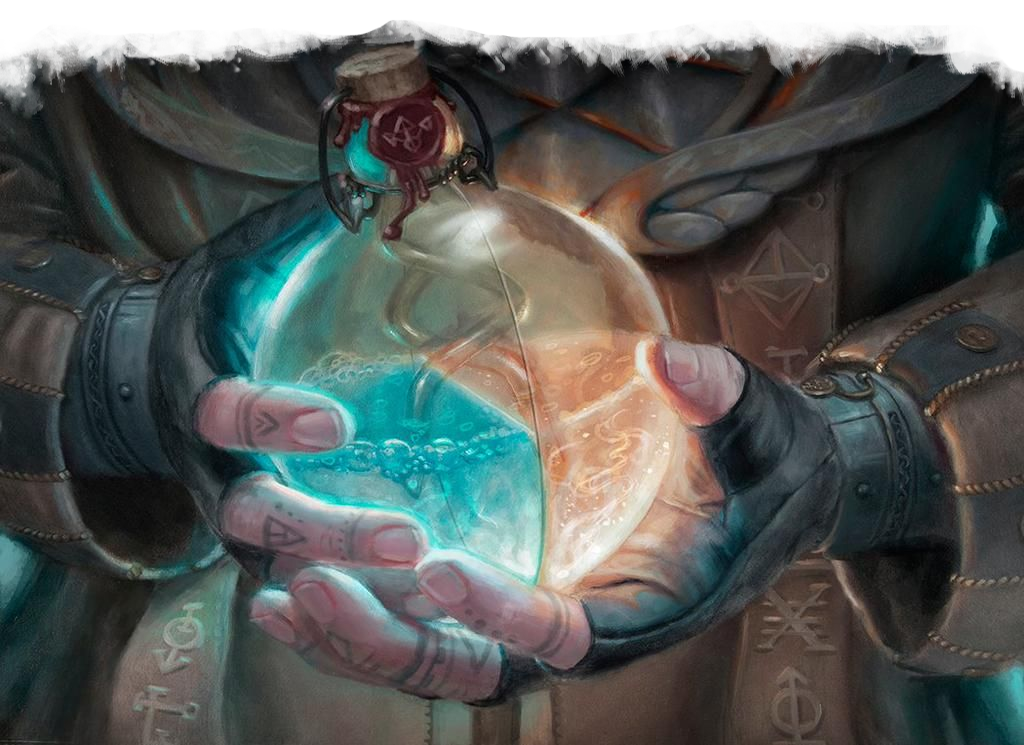
Greywalkers
Pale, modest, and soft-spoken, Greywalkers are the warrior priests that serve under the Painbearer. They travel the countryside of Aesoa and sometimes beyond, often in groups of three to five. They spend time in villages and cities, healing the sick and hearing their sins, so that the afflicted may be unburdened. When there are rumors of undead rising, Greywalkers will often investigate and seek to cleanse the area.
Though their ranks consist mainly of women, there are no restrictions to those who may join their faction. Usually those who have suffered greatly, or those who are destitute with no options seek the ranks of the Greywalkers, where they find ample support and community.
A Greywalker is easily recognizable by the long grey robes, accompanied by ropen bands of white. Those that can afford it supplement this with breastplates, gauntlets, and other piecemeal bits of armor, though as a volunteer organization the Greywalkers have few affluent enough to afford full plate or castle forged steel. Sometimes, weapons and armor are donated to them as reward for services rendered.
Perhaps the most noticeable feature of the Greywalkers is the grey threaded bandaged bound over their eyes. It is rumored that Greywalkers must give up their eyes as part of some secret joining ritual, though most seem to be able to see regardless. Whether or not these rumors are true, it is hard not to believe there is some magic at work, as it is nearly impossible to notice the vicious scarring, grey cracked pallid skin, or black engorged veins their members so often bear.
They are led by the High Priestess of the Painbearer, known as The White Widow.
Player Background: Greywalker
You have lived your life in service to the Painbearer - and to the people. Your worship is not done in isolation or silent prayer, but doing good work for the people of your province, and for your chosen deity.
Skill Proficiencies: Medicine, Survival
Tool Proficiencies: Herbalism Kit
Language Proficiencies: One of your choice.
Equipment: A set of grey robes, a healer's kit, a symbol of your deity, a book of absolution, 10gp
Feature: Walk the Path: You have spent time on the road, and know paths that many have long forgotten. You can always find your way back to a shrine, temple, or holy place once you have been there, and halve the amount of travel time when leading your party to such known locations within three miles. Additionally, you may heal the sick and wounded in villages, hear their confessions and write them in your book of absolution. In return for doing so, you may receive free lodging, small bits of coin, or rumors. Townsfolk will be more likely to aid you in searches for undead or desecrated places.
Roll a d8, or choose from the options below to determine your specialty within the Greywalker ranks.
| d8 | Specialty |
|---|---|
| 1 | Healing and Cleansing |
| 2 | Spiritual Attunement |
| 3 | Community Sermons |
| 4 | Preservation of Relics |
| 5 | Rituals and Blessings |
| 6 | Exorcisms |
| 7 | Petitions to the Painbearer |
| 8 | Confession and Absolution |

Vieifleurs
Translated to common, the "Wilted Flowers" are a group of witches, medicinewomen, and and alchemists that are dedicated to using natural based remedies and spells. It is said that theirs is the old way, and their techniques are ancient teachings passed down by Faeries to humans in days long past.
Presently, they can be found scattered all across Aesoa, as healers in villages, or keeping small communities on the outskirts of forests. Some folk respect them for their useful spells and potions, while others are strongly of their unusual and sometimes barbariac methods.

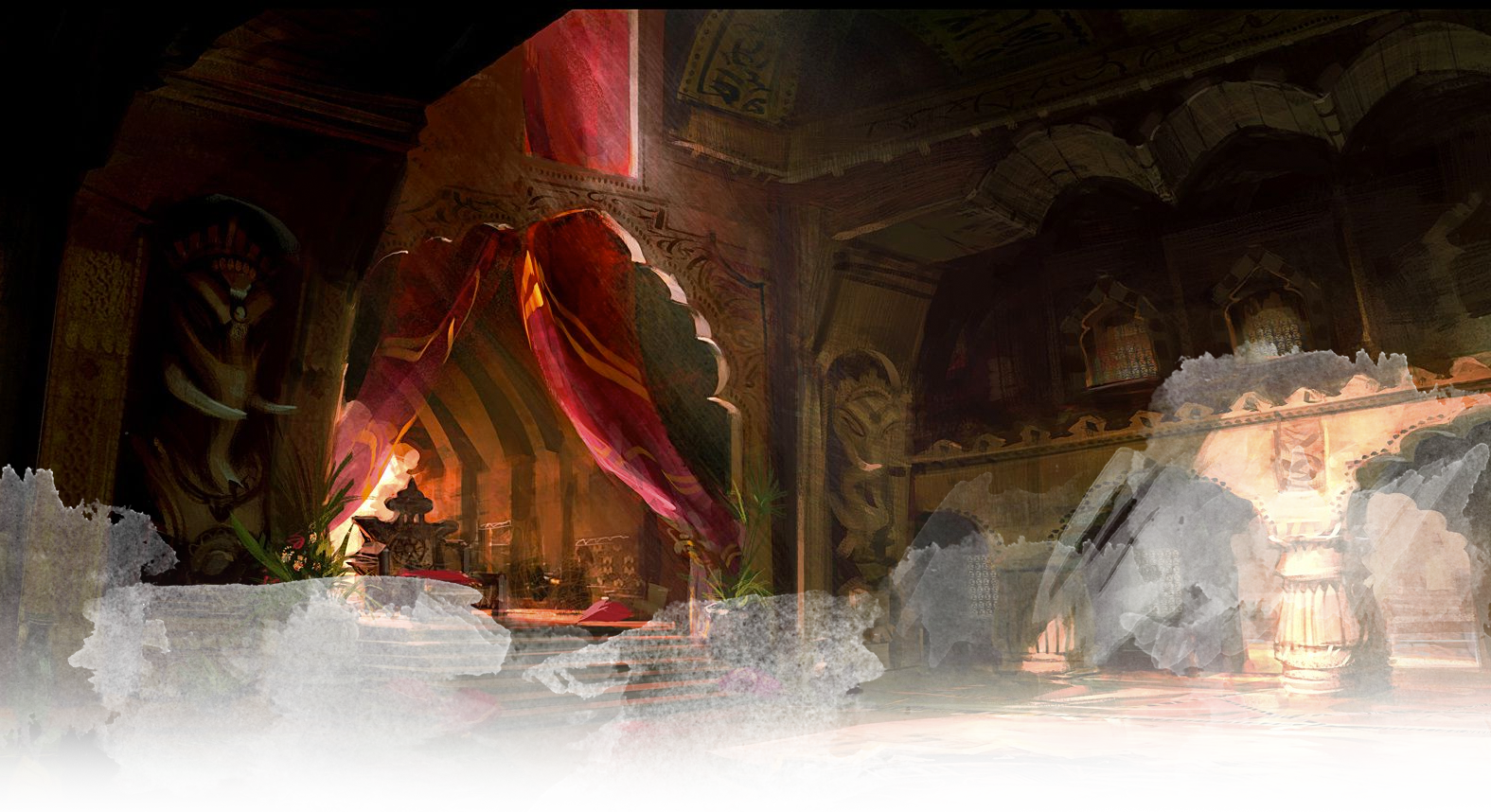
You will know our names
Cyrille Britomart
Otherwise known as The Chaste Queen, she is the wood elf Duchess of Azaïs. She makes her home in Antolême by the sea, where she can often be seen staring off into the grey waves of the Yearning Sea.
She is reportedly consumed with constant melancholy, and often defers to send others in her place to social and political events. She has been given the name Chaste Queen as she has ruled Azaïs for over 100 years without taking husband or suitor.
Florimell Delafosse
Is the Duchess of Lindelle. She is a human woman, and the youngest Duchess in all of Aesoa, not yet thirty. She is referred to as the most beautiful woman in Aesoa in certain circles, which causes some distaste among elven nobility who don't agree. Although young, she has proven herself a competent military tactician and warrior, known to some as Florimell of Seven Bells, or in less polite company: The Bloody Belle.
Despite this, rumor has she never misses a chance to attend a gala or throw an extravagant ball; her skills in the field of battle are matched only by
Hugo Chéron
The Clockwork King is a renowned genius, and Duke of Effrette. He is a high elf, though his bloodline was one of little nobility. He and his family rose rose to power relatively recently, after his council along with the Adamantine Consurvatorium, created a cure for the Ashplague. He keeps a meticulous hand in all the comings and goings in Effrete, and acts as mayor of Soibéliard.
Rumor strongly suggest he is a member of the elusive Council of Whispers, though he vehemently denies such claims.
Duessa de la Croix
Widely proclaimed as The Lady of Eminence, Duessa de la Croix is the high elf Duchess of Cichemère. No other name in Aesoa brings such instant recognition, weight, or implication. She rules the wide countryside her husband Alphonse won in battle, and lives the most elegant and luxurious life of anyone in the world.
She is known as the perfectly example of a Duchess: Serene, elegant, poised. Though there are few who don't know of her wrath, and the way lesser nobles who act out of line are soon erased from history.
Alphonse de la Croix
More commonly known as the legendary chevalier Redcrosse. Now well past his prime, he was responsible in the past for carving out a huge amount of territory from upstart young lords. He is known as a virtuous man, but loves nothing more than his wife. He often makes public appearances for large tournaments and festivals.
Filas of the Eversummers
Sir Filas of the Eversummers is an Eladrin chevalier and renowned warrior. He is notably handsome and flamboyant, often making a show of defeating opponents less skilled than he. He is sworn to the service of lady Duessa de la Croix.
Terror on the Coast
Aesoa has large runs of coast all along the south and western borders, and the open seas of other nations are merely miles away in the north. This, paired with the huge and profitable islands surrounding the country attracts all sorts of ill-reputed folk.
Raphael Dusong
Known commonly as Saltcrown, or The Corsair King, few who work the Isles of Liberation have not heard of this fearsome pirate lord. Known for his fearless attack of guild ships, and for freeing indentured servants off the islands and turning them into crew for his pirate fleet.
Seven Sails
The Seven Sails is the name of the fleet ran by The Saltcrown, named thus for the seven powerful flagships at the head of his fleet. The Seven Sails are more of a coalition of smaller pirate lords who swear fealty and pay plunder to The Corsair King, though all in the fleet abide by his code. Their symbol is a helm wheel with six points, the center comprised of the flagship to which they swear fealty.
Members are known as "Sev'ners" which is mockingly made of the slang dialect the nobles of Aesoa so despise. Sev'ners are comprised of debtors on the run, fishermen looking for a better chance of wealth, and freed men, who were sold as slaves or indentured servants.
Ravagers
An all encompassing term describing both unsworn pirates and small clans of wild costal dwellers, Ravagers are the most despised and feared encounter a coastal dweller can have. They are not united, instead consisting of independent groups of raiders and pillagers that often make their homes in rocky coves and caves that make them difficult to track or catch.
A pirate is sworn to a code, but a Ravager is driven only by that most primordial instinct: survive. They are considered more or less dangerous based on whichever group is encountered. The Salty Boys, Dead Dogs, and Toothless Brothers might be reasoned with or bribed, but an encounter with the Weepers or Broodlords will surely end in blood.
The Desselwynne Trading Federation
Made up of a conglomerate of lords, merchants, and sailors, the Desselwynne Trading Federation is the authority on shipping, importing and laws of the sea. They have their own fleet and army, which works independently of any lord, but always works in the interest of the company.
This naturally, puts them at odds with pirates, who constantly war with one another.

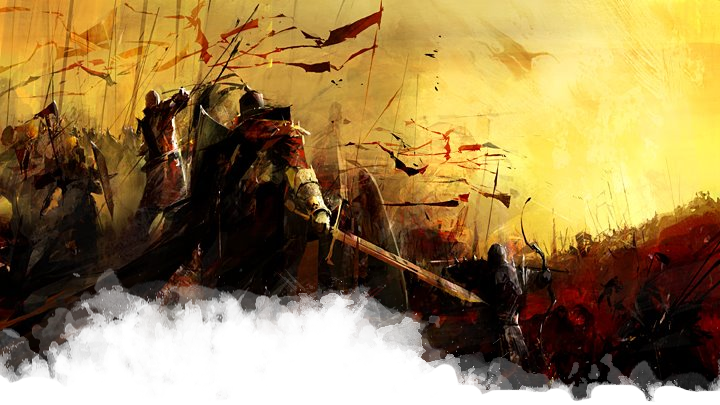
Legacies Writ in Blood
No strangers to conflict, the factions listed here are known for their fighting prowess and military tactics. Some are orders sworn to the nobles of the realm, but sellswords and mercenary groups are no strange sight in Aesoa, and often are the deciding factor in a conflict.
Redcrosse Knights
Named for their legendary founder, these elite legionnaires earn their titles through glorious deeds worth of the name. While among their ranks you may find a snobby high lord or noble's son, don't be fooled - any man wearing a red cross tabard has paid for it with blood.
Thriceborn
"I live, I die, I live again." Thriceborn are a notably ferocious mercenary group, usually found in Effrete. They boast that when they die in battle, they are reborn again, so their men know no fear. Wanting only to die in glorious combat, these wild men charge recklessly into combat, striking fear into opposing forces. They apply wild tactics and fighting styles that leave many of their men dead, yet other press on. It is rumored there is some truth to the rumors of their rebirth, as each company travels with a mysterious magic user known as a Shaman.
Sorrowsong
Sorrowsong was a warrior that led a rebellion against the lords of Aesoa forty years ago. He was nearly unparalleled in battle and gathered many smallfolk and lower lords to his cause. His true identity was never revealed before he was slain by Redcrosse.
The Order of Equipoise
The Order of Equipoise is a well equipped order of knights that believe in the balance of power. As such, you'll often find them hired on the underdog side of a fight, or hired to fight off monsters from a village rather than get involved in an affair of lords. Still, as sellswords, they do require coin, and sometimes aren't as choosy about their clients. They are well liked for their well mannered men, brightly colored lavish adornments to their armor, and open worship of the Harvest Mother.
The Unwanted
Consisting of social pariahs, abandoned children raised as soldiers, and freaks of nature, the Unwanted are a mercenary band called upon in times of deepest hatred. Their ranks are filled with the half-orcs, goliaths, and other undesirables. Often scorned by Aesoan lords in their earlier lives, these outcast mercenaries show no remorse in burning villages and salting fields (if that is what the contract calls for). They are notoriously well behaved outside of combat, making no fuss or harming no townsfolk unless ordered. As they see it, they are instruments of the world, a sword with which ill intentions are made flesh. They are very particular about their contracts, and will often fight only for lords with which no member has amnesty.
They are led by the Leper-King Uriel the Unclean.
PART VI
Locations
A Land divided
Aesoa is located on the southwestern corner of the continent of Goldrun. It is surrounded by Sedras, the nation of free cities to the North, and the ravaged land of Kel-Tharn to the east.
Aesoa itself is divided to lands according to their lords. The largest of these are known as duchies, ruled by a Duke or Duchess. The four duchies of Aesoa are Azaïs, Lindelle, Effrete, and Cichemère. Each of these duchies contains several smaller areas called counties, and each county has several smaller holdings known as baronies. All of the smaller areas have their own laws set by their lords, but must abide to the broader laws of the duchy as a whole.
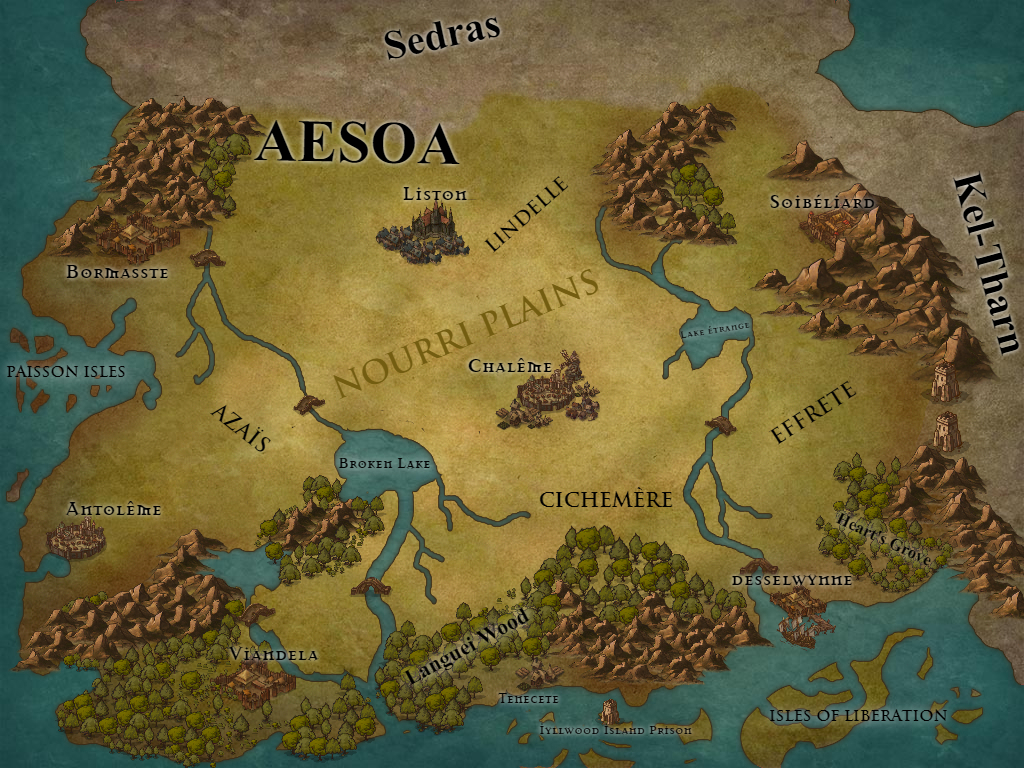
A Golden Pearl
Aesoa to the rest of the world seems a paradise, with their beautiful rolling hills and gorgeous coastal homes. Many who are affluent enough will vacation, or seek to make their homes there. When they do, they find that the beautiful castles and extravagant vineyards are not for purchase, as blood is the only thing worth more than gold in Aesoa.
Foreigners of any kind are met with distrust, and often a level of indignity. Though locals are happy enough to open up when coin is on the table.
Azaïs
Azais (AH-zah-EE) is the southwesternmost point of Aesoa, encompassing the land to the north and south of the Breakspire Mountains It is the most heavily forested of all regions, and has the highest concentration of Wood Elves and Forest gnomes. It's main exports are rice, grapes, olives and tomatoes. Along the rocky coast, fishermen are common, while carpenters and craftsmen are more popular in the wooded regions.
The people of Azaïs are thicker-skinned and used to hard work, the fresh seafood requires careful care and strength of character to bring in, and the rocky terrain makes the earth harder to work and sow. The folk of Azaïs joke that it gives their food, wine, and people "character", as they have to struggle more for what they earn.
Paisson Isles
(Pa-SSOHN) Often mispronounced as "Passion" Isles by foreigners, the Paisson Isles are small rocky Islands home to crabbers and fishermen. Of all Aesoan natives, people of these islands know the most simple and rustic lifestyle. They go on with their lives fishing, oblivious of the affairs of lords and ladies in their castles, except on the rare occasion an island is deemed to have some naval strategic worth.
Antolême
(AHN-toh-LEHM) Known as the Descended City, Antolême is a fortress city, hewn into the side of the Yearning Coast. Half of the city is aboveground, with large walls and battlements to oversee the surrounding farmlands. The city then descends into the side of the coast, boasting a gigantic network of tunnels and underground buildings, some of which are said to be completely submerged at certain points in the tide.
Breakspire Mountains
These tall jagged cliffs completely cut through the southern part of Azaïs, closing off the two largest cities in the region from one another. They are notoriously dangerous to traverse, even with the few established paths they have, making trade and travel much easier by river or sea.
Viandela
(vee-AHN-del-AH) Deep in the Videl woods is a city lit only by the light which breaks through the canopy overhead. Hewn from natural wood and stone, Viandela is the only place that truly represents the homeland of the elves they left so long ago. Whispering spirits can be heard from the runes carved in the ancient trees there, wild animals roam freely throughout the city without cause for alarm, and traditions thought long lost to the world are still observed.
Videl Woods
These quiet woods have trees taller than any other place in all of Aesoa, with thick roots and bark which give traveler's the impression they are wondering through something from an ancient world. Wildlife is abundant here, though hunting is strictly regulated and poachers are often caught and punished harshly.

Lindelle
Lindelle is the northernmost region of Aesoa, and borders Sedras. They grow corn as a major fodder product. Château Liston is the Capital.
The folk of Lindelle are by far the most ethnically and economically diverse. This is in no small part thanks to the provinces proximity to the Free Cities of Sedras to the north. Though technically Bormasste is more northward, the mountains and river make it much easier for travelers to make it to the large city of Liston. The gigantic stretch of Nourri Plains is home to gigantic farmlands, and various smaller Châteaus, some that are led by even non-elf, non-human leaders.
Liston
Known commonly as The City of Bells, Liston is a gigantic fortress of a city, which boasts walls over fifty feet tall mounted at the the top of the spiraling hill on which the city is built. The City stands as Aesoa's defense from threats to the north, as warbands and conquerors from the free city occur every few decades.
The city is more culturally diverse, and has a district dedicated to the different races that live there. Merchants often seek to trade marvelous or exotic items at the renowned Wayfairer's Market. The city is perhaps best known for its gorgeous Château, which has hundreds of beautiful bells, all of which only ring for certain occasions.
Bormasste
(bohr-MASH-teh) Built in the side of the Sundertop Mountains, Bormasste, and it's surrounding towns, are the foremost producers of fine wine in Goldrun, and possibly the world. Bormasste is a city of extreme taste and pride, craftsmen there have applicants for apprenticeship from all over the world. Shortcuts and cheapening of products is largely looked down upon. For these reasons Bormasste has a much larger Dwarvern population than usual.
Nourri Plains
These rich, golden green plains run for hundreds of miles. Hundreds of small farmlands and dozens of large ones are contained within. The hills make excellent homes for dwarves and halflings, and humans set up villages wherever they can. They say the sun always shines on the Nourri plains, as the grass and crops there seem to grow and sprout as if they held sunlight in reserve. Being out in the open leaves some communities easy prey to bandits and monsters, so smallfolk must count on their local liege lord to protect them.
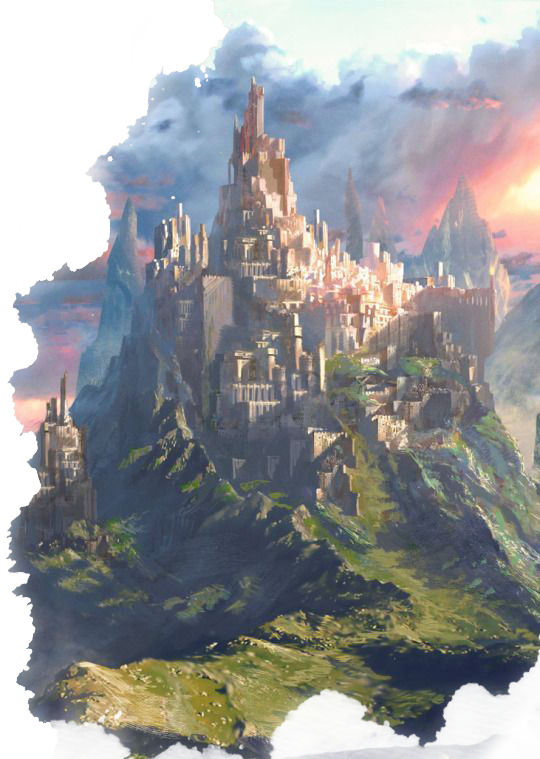

Effrete
Mountainous, difficult, and in a precarious position, Effrete is hardly the first choice for most Aesoans. There is constant threat of war tribes from the west, or raiders from the north. Thankfully, the land itself is laden with hills and mountains, making large assaults nearly impossible.
Trade, invention and innovation are the driving forces behind Effrete culture, though that is not to say it's lords and ladies don't participate in the same high societal lifestyle .
Soibéliard
(SWAH-bay-li-ARRd) Home to a gigantic Gnome population, Soibéliard is the home for researchers, wizards, and tinkerers. The city is one of the most techinlogically advanced in the world, with large trams that move throughout the city on rails, and huge lifts that bring citizens to different levels that run on steam. Such things are common in Soibéliard, but to a peasant who has never been there, such things are hard to believe.
The whole city is carved of brass and iron clockwork, and connected through a huge amalgamation of turning gears. At the center of the town is the Illusive Tower a gigantic arcane tower attuned to a clock. At different parts of the day, the hands of the clock will move, and the city will shift with it, making some parts accesible and closing off others. Knowing how this system works is a sign of citizenship for Soibéliard, and outsiders who are injured or confused are seen as ignorant.
During the day, the city is brown and red, and the tinkerers and engineers work tirelessly. When night falls, the city comes alive with arclights and magical runes, illuminating the mountainside like an aurora. It is then that the magicians wake to practice their magics.
Desselwynne
Otherwise known as the Port o' Freedom Desselwynne is the main port city of Aesoa. Because the Yearning sea is often so diffcult to sail, merhcants and sailors will sail south out of Desselwynne, and head north through the Tostric Channel to the east of Goldrun. All major imports and exports are done through the city, which has no lord, but rather a council made of the major merchants and shipbuilders in the region.
Isles of Liberation
Ironically named, as these islands to the south of Effrete are home to some of the worst indebted people in the world. When a loan cannot be paid, or a lord is offended by a commoner, the offendor will often be sentenced to hard labor at one of these islands. Ran by ruthless wardens, and prone to gang violence, some say rotting in a dungeon or sometimes death is better. These islands grow tobacco, sugarcane, and have deep saltmines that require many working hands. This area is also prone to heavy pirate activity.
Heart's Grove
Far to the south of Effrete is a grove of golden arch-trees, long withstanding through the passage of time. Even on the outskirts of these woods, time seems to stand still, and one can breathe in winds carrying scents of wildflowers, and honey. This is said to be the last home of the Firbolg people after all other such groves were destroyed long ago. Entry to these woods is strictly forbidden without the clans permission, and is punishable by death.
Lake étrange
Named "Stange Lake" thusly for the strange rumors and legends surrounding the lake. Mists will often rise, even when the weather isn't calling for it. Boats and traveler's note that crossing takes a fair deal more time than it should, and items and cargo and rarely people go missing.
The rumors and folklore are wild and numerous, from sea monsters, to a witches coven, to an underground network of merfolk polotting revenge against the surface. No evidence has been gathered supporting such claims, but locals do their best to avoid the lake and utilize the rivers instead.

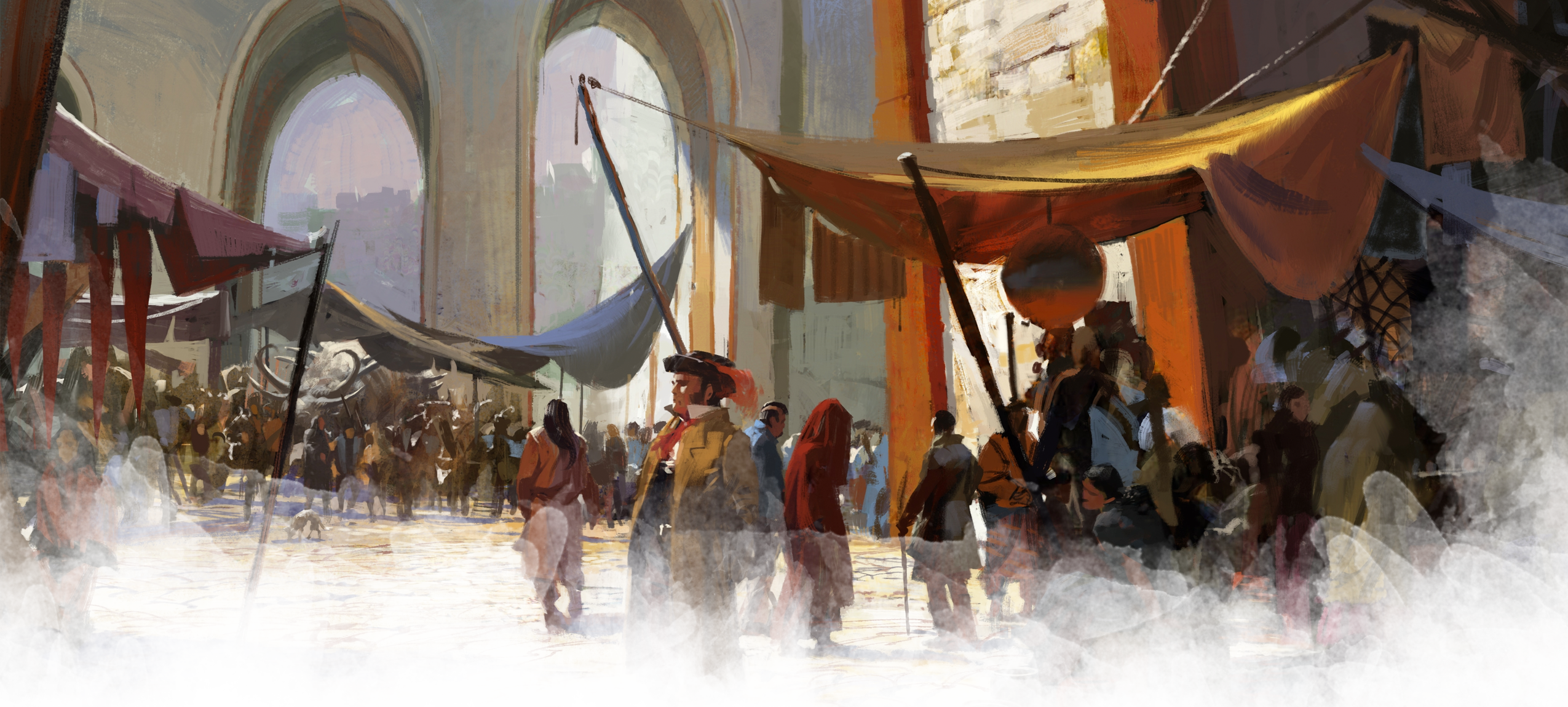
Cichemère
The heartland of Aesoa, Cichemère (SEE-shuh-MEHR) is home to the most extravagant castles, fabulous villas, and proudest lords in the entire country. Surrounded by wealth and an abundance of resources, the lords of Cichemère want for little, and those who serve them well prospr under their rule.
At the heat of the country, here people in the higher branches of the hierarchy are untrusting, even of those from other regions in Aesoa. Outsiders like half-orcs and dragonborn have little chance of advancing through the ranks of society here, as common folk fear them, and lords only tolerate them as long as their swords are sworn in service.
Chalême
Chalême (shah-LEMM) is a city known as the Crown of Aesoa as historically, the Duke or Duchess in this seat is considered the most affluent and powerful. That may indeed be the case, as commerce flows through Chalême like water through a river. Centered in the middle of the country, most traders will opt to bring their wares to Chalême rather than trek to another city or port. Those who live there often create systems of resell, moving goods down to Desselwynne for a profit.
The best chevaliers train there, and the horses they breed in Chalême are second to none. Those wishing to taste the high life or simply bask in the presence of perfection seek their fortune in the city.
Broken Lake
The Broken Lake is the border of the region. As a freshwater lake, it brings an abundance of life to the region, and there are many settlements just outside the water. It is known as the broken lake as it is in two halves - the lake flows underground and reemerges on the other side of the Breakspire Mountains.
Languei Wood
The Long Wood as it's known, is a forest that is not as dense as it is lengthy. It serves as a natural barrier between the Nourri plains and the coast to the south, though the wood is not so desne that it prevents lords from making their keeps and holds in it. Wild game is relatively plentiful, and there is plenty to forage by way of mushrooms and roots. this unfortunately, makes it a favorite home for outlaws and vagabonds.
Practice
Safe
Homebrewing
This has been a huge labor of love for me, to finally get down all the ideas that have been rolling around in my head for the past few years. This is but one small chunk of the world I have planned, and it's my sincerest hope that the information listed here will help inspire you, and aid you in your roleplay,
This is also a working piece. As basically a first draft, there is plenty of content that could be expanded upon, as well as plenty of typos and verbage to clean up! The art takes quite a while to get just right, so please bear with the pictures we have in place for now.
So please enjoy this campaign guide, and ask your dungeon master if you have any questions regarding Aesoa, the setting for our new campaign: The Faerie Queene!
Cover Art: Kin Fables
More Credits
Thanks to Mitchel C. for his contribution on many of these subjects!